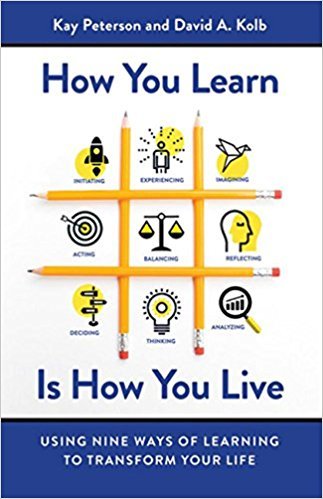What do you think?
Rate this book


232 pages, Paperback
Published April 17, 2017
"This is quite different from the model of learning where information transferred from the teacher to the learner is meant to be memorized for later recall and testing.
In the linear model, the learner is a passive recipient of information, whereas in the cycle of learning, learners receive information through experiences, reflect on it, think about it abstractly to connect it with related information, and then use it to take action. Here, we are both receivers of information and creators of information."
"We are shaped by our experiences, but through learning we have the transformative power to choose the experiences that are most fulfilling in order to shape our destiny."